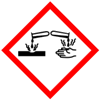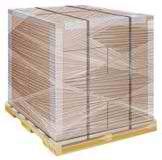SDS of HEDP Hydroxyethylidene Diphosphonic Acid Manufacturers
CAS Number 2809-21-4
HEDP Hydroxyethylidene Diphosphonic Acid Manufacturers.
Hydroxyethylidene Diphosphonic Acid (HEDP Phosphonate)
SDS, Safety Data Sheet
MSDS, Material Safety Data Sheet 02-Sept-22
1. Product Identification
Product Name & Other Names: Sal HEDP Phosphonate; HEDP (A) or HEDPA or ETIDRONIC ACID or 1-Hydroxy Ethylidene-1,1-Diphosphonic Acid or Hydroxyethylidene-1,1-diphosphonicacid(HEDP) or 1-HYDROXYETHYLIDENEDIPHOSPHONIC ACID or Hydroxyethylidene Diphosphonic acid (HEDP) or 1-hydroxy-1,1-Ethanediyl ester.
CAS No.: 2809-21-4
EINECS EC Number: 220-552-8
Molecular Weight: 206.02
Chemical Formula: C2H8O7P2
Relevant uses and uses advised against (if any): Industrial Manufacturing.
2. Hazards Identification
GHS, Globally Harmonized System Classification in accordance with 29 CFR 1910
Classification according to Regulation (EC) No 1272/2008
Corrosive to Metals Category 1, H290
Acute Toxicity: Oral, Category 4, H302
Skin Corrosion/Irritation, Category 1A B C, H314
Hazardous to the aquatic environment, acute hazard Category 2, H401
Labeling according to GHS & Regulation (EC) No 1272/2008
GHS Label Elements  Corrosive |
Signal Words: Danger
Hazard statements:
H290: May be corrosive to metals.
H302: Harmful if swallowed.
H314: Causes severe skin burns and eye damage.
H401: Toxic to aquatic life.
Precautionary statements:
P234: Keep only in original container.
P260: Do not breathe dust/fume/gas/mist/vapors/spray.
P264: Wash hands thoroughly after handling.
P280: :Wear protective gloves/eye protection/face protection.
P312: Call a POISON CENTER or doctor/physician if you feel unwell.
P301+P330+P331: IF SWALLOWED: rinse mouth. Do NOT induce vomiting.
P303+P361+P353: IF ON SKIN (or hair): Remove/Take off immediately all contaminated clothing. Rinse skin with water/shower.
P304+P340: IF INHALED: Remove victim to fresh air and keep at rest in a position comfortable for breathing.
P305+P351+P338: IF IN EYES: Rinse cautiously with water for several minutes. Remove contact lenses, if present and easy to do. Continue rinsing.
P363: Wash contaminated clothing before reuse.
P404: Store in a closed container.
P405: Store locked up.
P390: Absorb spillage to prevent material damage.
P501: Dispose of contents/container through a waste management company authorized by the local government.
3. Composition/Information on Ingredients
Product Name & Other Names: Sal HEDP Phosphonate; HEDP (A) or HEDPA or ETIDRONIC ACID or 1-Hydroxy Ethylidene-1,1-Diphosphonic Acid or Hydroxyethylidene-1,1-diphosphonicacid(HEDP) or 1-HYDROXYETHYLIDENEDIPHOSPHONIC ACID or Hydroxyethylidene Diphosphonic acid (HEDP) or 1-hydroxy-1,1-Ethanediyl ester.
CAS No.: 2809-21-4
EINECS EC Number: 220-552-8
4. First Aid Measures
Always seek medical attention after first aid measures are provided.
Inhalation: Remove to fresh air. If not breathing, give artificial respiration. If breathing is difficult, give oxygen. Get medical attention immediately.
Ingestion: Do not induce vomiting. Get medical attention immediately. Never give anything by mouth to an unconscious person.
Skin: Contact: Immediately flush skin with plenty of water for at least 15 minutes. Remove contaminated clothing and shoes. Get medical attention. Wash clothing before reuse. Thoroughly clean shoes before reuse. Get medical attention.
Eye Contact: Immediately flush eyes with plenty of water for at least 15 minutes, lifting upper and lower eyelids occasionally. Do not allow the victim to rub eyes. Get medical attention.
5. Fire Fighting Measures
Fire: It is a slight fire hazard. Dust air mixture may ignite or explode.
Fire Extinguishing Media: Use means suitable for extinguishing surrounding fire. Use dry chemicals, carbon dioxide, water, foam. Water spray may be used to keep fire exposed containers cool.
Special Information: In the event of a fire, wear full protective clothing and NIOSH-approved self-contained breathing apparatus with full face piece operated in the pressure demand or other positive pressure mode. At high temperatures under fire conditions, it may produce toxic or irritating fumes. Fire-extinguishing work is done from the windward and the suitable fire-extinguishing method according to the surrounding situation is used. Uninvolved persons should evacuate to a safe place.
6. Accidental Release Measures
Personal precautions, protective equipment and emergency procedures: Avoid breathing dust/fumes/gas/mist/vapors/spray. Ensure adequate ventilation. Use individual protective equipment (waterproof boots, suitable protective clothing, safety glasses, etc.).Do not approach facing the wind.
Environmental precautions: Do not let the product enter drains, soil or water sources.
Methods and materials used for containment Cleanup procedures and Storage: Contain spilled material. Cover with an inert, non-combustible absorbent material, (e.g. sand, earth, diatomaceous earth, vermiculite). Vacuum or sweep-up and remove to an approved disposal container.
7. Handling and Storage
Precautions for safe handling: Apply according to good manufacturing and industrial hygiene practices. Ensure proper ventilation. Wash thoroughly after handling. Do not drink, eat or smoke while handling. Avoid contact with skin, eyes and clothing. Minimize dust generation. Avoid breathing dust/fumes/gas/mist/vapors/spray. Keep container tightly closed. Avoid ingestion and inhalation. Use individual protective equipment (waterproof boots, suitable protective clothing, safety glasses, etc.).
Conditions for safe storage, including any incompatibilities: Store in cool, dry and ventilated area away from heat sources and protected from sunlight & moisture in tightly closed original container. Keep air contact to a minimum. Do not leave the material container open. Store protected from heat, sparks and ignition sources and incompatible materials. Avoid contact with skin and eyes. Avoid inhalation of dust/mist/vapor. Do not store with incompatible materials like bases, amines, metals, reducing agents, oxidizing materials.
8. Exposure Controls/Personal Protection
Exposure Limits: No occupational exposure limits established.
Ventilation System: A system of local and/or general exhaust is recommended to keep employee exposures as low as possible.
Personal Respirators (NIOSH Approved): For conditions of use where exposure to dust or mist is apparent and engineering controls are not feasible, a particulate respirator may be worn.
Skin Protection: Wear protective gloves and clean body-covering clothing.
Eye Protection: Use chemical safety goggles and/or full face shield where dusting or splashing of solutions is possible. Maintain eye wash fountain and quick-drench facilities in work area.
Other Control Measures: Maintain good housekeeping in work area. Handle in accordance with good industrial hygiene and safety practice. Wash hands after handling.
9. Physical and Chemical Properties
Appearance: Clear, colorless to pale straw liquid.
Odor: Odorless
Odor threshold: Not available.
pH:2 - 3
Relative density: 1.40 - 1.45
Melting point: < 1C, < 34F
Boiling Point: 108C, 226F
Flash point: Not available.
Auto-ignition temperature: Not available.
Decomposition temperature: Not available.
Upper/lower flammability or explosive limits: Not available.
Vapor Pressure: 23.8 @ 25C, 77F
Vapor Density: 0.8
Evaporation rate: 1 (N-Butyl Acetate = 12).
Flammability (solid, gas): Not available.
Partition coefficient: n-octanol/water: Not available.
Water solubility: Complete.
Viscosity: Not available.
10. Stability and Reactivity
Reactivity: Stable at normal temperature and pressure.
Conditions to avoid: Avoid heat, flames, sparks and other sources of ignition. Dangerous gases may accumulate in confined spaces. May ignite or explode on contact with combustible materials.
Incompatibilities: Bases, amines, metals, reducing agents, oxidizing materials.
Alkalis: Violent reaction
Amines: Incompatible
Metals: May be corrosive in the presence of moisture
Metal salts of sulfides: May release toxic gases
Oxidizers: Fire and explosion hazard
Sulfites: May release toxic gases
Hazardous Decomposition: Thermal decomposition products: phosphine, inorganic acids, oxides of phosphorus.
Polymerization: Will not occur.
11. Toxicological Information
1800 mg/kg oral-mouse LD50
Local effects: Irritant skin, eye corrosive, inhalation ingestion.
Toxicity: Moderately toxic: ingestion
Reproductive effects:
40 mg/kg intraperitoneal-mouse TDLo 7 day/s pregnant female continuous;
200 mg/kg intraperitoneal-mouse TDLo 7 day/s pregnant female continuous;
200 mg/kg intraperitoneal-mouse TDLo 7 day/s pregnant female continuous;
200 mg/kg intraperitoneal-mouse TDLo 8 day/s pregnant female continuous;
200 mg/kg subcutaneous-mouse TDLo 13 day/s pregnant female continuous;
1400 mg/kg subcutaneous-mouse TDLo 11-17 day/s pregnant female continuous.
Carcinogenicity: Not known to be carcinogen.
12. Ecological Information
Environmental Toxicity: Invertebrates: 48 h, EC50 Water flea (Daphnia magna) 527 mg/l Fish: 96 h, LC50 Rainbow trout (Oncorhynchus mykiss) 368 mg/l 96 h, LC50 Bluegill sunfish (Lepomis macrochirus) 868 mg/l
Algae: 96 h, EC50 Algae (Selenastrum capricornutum) 3 mg/l
Algal growth inhibition is due to ability of this product to complex materials not to toxicity per se.
Environmental fate:
Modified OECD Screening theoretical CO2 evolution 2 % 70 d Modified SCAS Dissolved Organic Carbon removed 90 % Closed Bottle BOD30/COD 5 %
Degrades after acclimatization. Not expected to bio-accumulate.
13. Disposal Considerations
Whatever cannot be saved for recovery or recycling should be managed in an appropriate and approved waste disposal facility. Processing use or contamination of this product may change the waste management options. State and local disposal regulations may differ from federal disposal regulations.
14. Transport Information
DOT USA, TDG Canada & ADR/RID Europe
Proper Shipping Name : Corrosive liquid, acidic, organic, n.o.s. (phosphonic acid)
UN 3265
Class : 8; Packing Group : III.
IMDG/IMO & IATA/ICAO
Proper Shipping Name : Corrosive liquid, acidic, organic, n.o.s. (phosphonic acid)
UN 3265
Class : 8; Packing Group : III.
15. Regulatory Information
USA:
SARA Section 302 (40 CFR 355.30): N TPQ
SARA Section 304 (40 CFR 355.40): N RQ
SARA Section 313 (40 CFR 372.65): N
California Prop 65 Status: N
SARA 311/312: Acute Hazard. See section 2.
Section 16 - Additional Information
DISCLAIMER: The information and recommendations set forth herei are presented in good faith and believed correct as of the date hereof. It is compiled from various sources and it is not necessarily all inclusive nor fully adequate in every circumstance. In addition, these suggestions should not be confused with nor followed in violation of applicable laws, regulations, rules or insurance requirements applicable. This MSDS sheet is intended only as a guide to the appropriate precautionary handling of the material by a properly trained person using this product. Individuals receiving the information must exercise their independent judgment in determining its appropriateness for a particular purpose.
Hydroxy Ethylidene Diphosphonic Acid manufacturers;
HEDP, 1-Hydroxyethylidene-1,1-Diphosphonic Acid manufacturers:
Muby Chemicals & Associated Cos
BANDEALI BUILDING, CHINCHBUNDER, MUMBAI 400009, INDIA.
TEL: 91-22-23728264. Gujarat & Mumbai India.
info(At the Rate i.e. @)mubychem(dot)com

Copyright and Usual Disclaimer is Applicable
Last updated
5-may-25

Exports to USA UAE Europe South Africa Tanzania Kenya Uganda Egypt Nigeria Turkey Brazil Chile Argentina Dubai Cameroon Guatemala Mexico etc.
Barter
They who love thee on this earth, keep calling on thee and chanting thy beads
Lest thou forgetest.
They assign the credit of their hard work to your blessings
They keep you amused.
They come to thy temple with baskets of fruits, as if you were a glutton
They deny the same to their children.
They offer you milk for a bath and burn the ghee
They hardly understand the meaning of it.
They bring gold and diamonds. They come with beating of drums
They love to advertise their offerings.
They offer you a small bribe as advance for booty, called lottery
They love to dream.
I do not bow down at your door
I do not bargain for booty
Your promise of the heaven does not lure me
Your hell-fire does not scare me
I do not even know the proper method of prayer
I do not offer any thing to you
Ages have gone by and I have not seen you my lord
Yet my love for you keeps waiting for you.
